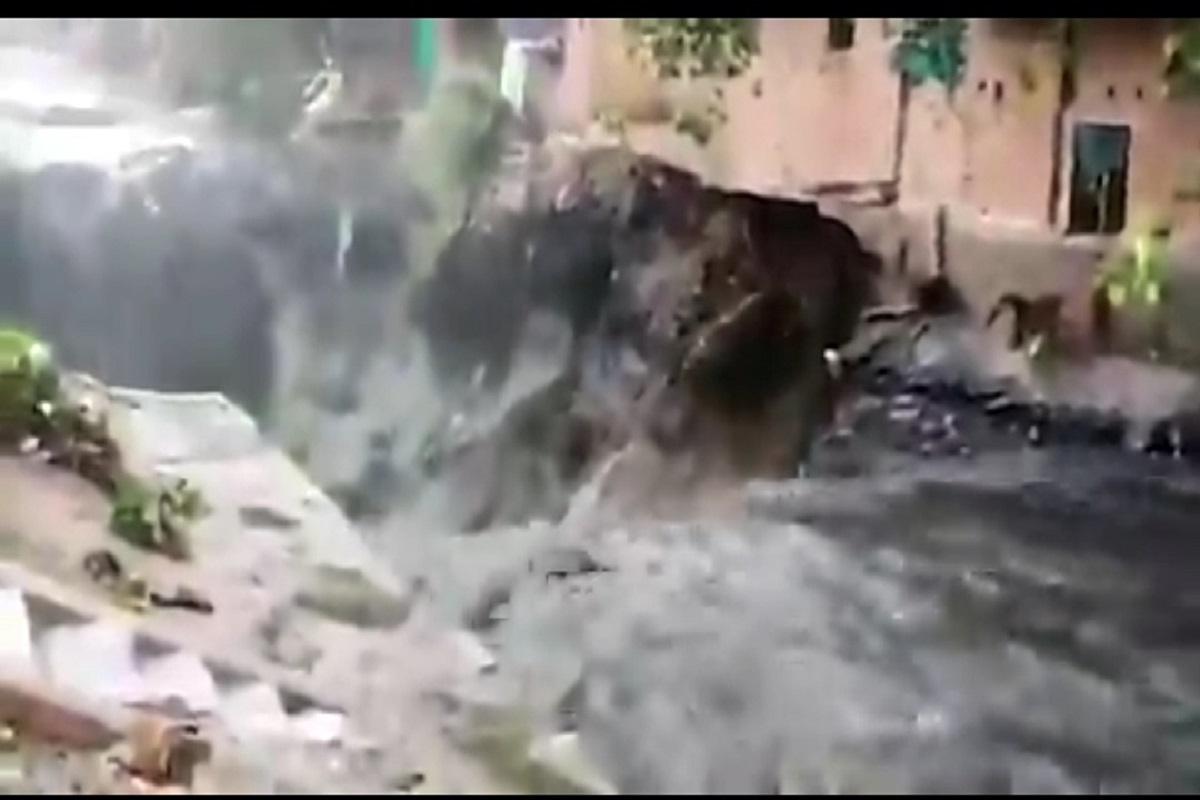Drunk riders fall off flyover in Delhi
A tragic accident occurred on Geeta Colony flyover, resulting in one fatality and another person sustaining serious injuries, police said on Sunday.
But it is almost as if the arrival of the monsoon every year is a source of wonder to municipal authorities; without fail they are caught by surprise by an event that a child could predict.

Several houses have also been washed away in Anna Colony near ITO as heavy rainfall resulted in the sewage water being washed out. (Photo: Twitter/@IYC)
For as long as any Delhi’ite can remember, the road under Minto Bridge leading from Connaught Circus to the New Delhi railway station gets waterlogged after every heavy downpour, as it did on Sunday, leading to a bus being submerged and passengers having to be rescued. Considered a heritage structure, having been constructed in the 1930s, the bridge is jointly maintained by the railways and the New Delhi Municipal Council, and has sometimes been described as a celebration of decay.
Despite the city centre having got several face-lifts in the past nine decades, the problem of waterlogging under Minto Bridge has ~ amazingly for a country with unbounded talent and ingenuity ~ defied a solution. Poor maintenance has also only exacerbated its problems. As Omar Abdullah tweeted wryly: “No Delhi monsoon is complete without a ‘bus stuck under Minto Bridge’ story. Thankfully this year is no different.”
Advertisement
Minto Bridge is just one of several trouble spots in the city that appear to give up in the monsoon; there are many others, especially underpasses, prone to waterlogging in the various municipal jurisdictions of the capital city. Not all of them are afflicted by an endemic problem like Minto Bridge; most could be handled with adequate pre-monsoon maintenance including cleaning of drains clogged with fallen leaves and debris.
Advertisement
But it is almost as if the arrival of the monsoon every year is a source of wonder to municipal authorities; without fail they are caught by surprise by an event that a child could predict. It is only after citizens have been inconvenienced for a few days that the authorities pick up their shovels. Although it is easy to be wise after the event, it must be said this year could have been different. Between the last week of March and May, city roads and infrastructure were used only sparingly.
At the same time, thousands of casual workers had been laid off jobs and were queuing up for relief. They were desperate for succour and would have been delighted to be gainfully employed on vital outdoor jobs such as road repair and drain maintenance. But the city’s administrators ~ frozen like deer by headlights in the face of a virus outbreak ~ could not respond to the other crises that loomed and let an opportunity slip by. If the first phase of the lockdown was considered inopportune for maintenance work, the second one which permitted some relaxations, could have been utilised gainfully.
But it was not. Stories of such woes have been reported from around the country. Just two days ago, there were reports of severe waterlogging in Mumbai; smaller cities and towns ~ smart and not so smart ~ too have been hit. The result is that the slide of the country’s urban agglomerations into decrepitude continues with consequences that annually confront citizens. The difference this year is these infrastructure woes come amid a public health emergency and force many to ask when their miseries will end.
Advertisement